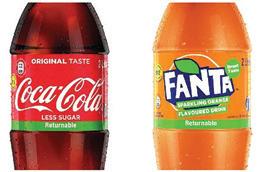
5 minute read
PET OR HDPE?

WASTE NOT, WANT NOT
Advertisement
TO MANY, THROWING “JUST ONE” PLASTIC BOTTLE AWAY DOESN’T SEEM TO BE A PROBLEM. MAGNIFY THAT THINKING BY 8 BILLION PEOPLE ALSO DISPOSING OF “ONLY ONE” BOTTLE AND THE SITUATION RAPIDLY SCALES UP TO ALARMING PROPORTIONS – WHICH IS WHY PACKAGING IS GETTING A RETHINK.
Packaging, on its own, is not the problem. Packaging ending up in landfill is! South Africa is already exceeding expectations of recycling rates with regards to plastic, with a rate of around 46%, one of the highest in the world. It’s most definitely good news – but ...
Sadly, that is more because a marginalised segment of society – unemployed waste pickers are culling recyclable plastics from domestic refuse to earn a living – than because local society thinks that removing plastic from the waste stream is a good idea. In 2019, one kilogram of PET (polyethylene terephthalate) plastic was worth R2. That’s 25 one litre bottles or 50 500ml bottles. To make up one ton would require around 30 000 PET bottles.
According to the latest available figures, more than 519000 tons of plastic waste was recycled in South Africa in 2018, much of it due to these informal waste pickers. On bin removal days, these recyclers can be seen stripping out products of value from garbage in cities and towns throughout the country.
Coca-Cola Beverages South Africa (CCBSA) recently announced that it would roll out its returnable plastic bottle scheme so successfully piloted in the Eastern Cape in 2019. Each specially branded 2-litre Coca-Cola bottle returned is worth R9 to whoever hands it back in. For an older generation of South Africans this concept is nothing new – except 30 years ago it was all glass cool drink bottles which were returned to shops, supermarkets and corner cafés for a few cents at a time.
“The consumer response to the new 2-litre returnable PET bottles has been overwhelmingly positive. We have seen customers in the Eastern Cape opting to switch over to purchasing the returnable bottles and returning them after consumption,” said Coca-Cola MD Velaphi Ratshefola. “After each bottle reaches the end of its useable lifecycle, it joins a regional manufacturing value chain which ultimately means less pollution in the environment.”
The bottles are distinguished from the many bottles on shelf by a green strip on the label. The product inside remains exactly the same, whether the preference is for original recipe, low sugar or zero sugar. The returnable bottles can be used up to 14 times before they are recycled and then used to make new PET plastic containers.
“We’re committed to increasing recycled material in our packaging and ensuring more packaging is collected and recycled. The roll-out of returnable PET plastic bottles is another way we can support a circular economy in South Africa,” she said at the launch in July.
Her words echoed those by the president of Coca-Cola Europe, Tim Brett. He was the man who said in an interview with Packaging magazine last year: “Packaging per se is not the problem. It’s the packaging that ends up in landfill or in litter. That sounds jarring when you first hear it and I am not denying there is a packaging waste problem – but it is not necessarily the material.


“I really believe strongly we don’t have a packaging problem. We have a waste problem and a litter problem. There is nothing wrong with packaging, as long as we get that packaging back, we recycle it and then we use it again,” Brett said. As the Coca-Cola Company has stated, returnable PET is part of its World Without Waste vision that aims to collect and recycle the equivalent of every bottle and can that it sells globally by 2030.
And it’s not just plastic which benefits from this retrieval from waste: glass, paper and cardboard also have financial value as recyclables.
In Britain the Waste and Resource Action Programme (WRAP) found a few key insights after conducting a study some years ago. The UK glugs down 13.9 billion litres of soft drinks annually – and around 700 000 tons of soft drink packaging can be found in the waste stream, almost half of which is from domestic households. By lightweighting alone, up to 20% less packaging would be required for soft drinks – “saving” 140 000 tons. One interesting take away of lightweighting is that by making


aluminium cans 5% lighter, 88 000 tons of carbon dioxide will be saved in the European Union alone. That’s the equivalent of removing 28 000 cars from the road!
What is lightweighting? Essentially, it’s using less of the raw material in packaging, making the whole package and product lighter which in turn saves energy and money in both manufacture and distribution. Nowadays, cans generally contain 35% less aluminium than a mere decade ago while the average plastic bottle has 25% less PET.
Again, to use a Coca-Cola example: cutting the weight of the 330ml glass bottle of Coke from 263g to 210g – a 20% reduction – saved hundreds of tons of raw material without affecting the structural integrity of the bottle. The whole function of packaging is to protect the product, ensuring the end consumer gets the goods in the best possible condition, safely and hygienically.
PET (Polyethylene Terephthalate) as used in cooldrink bottles, 2 is HDPE (High-Density Polyethylene) used in milk containers, bottle caps; 3 – PVC (Polyvinyl Chloride), 4 LDPE (Low-Density Polyethylene) used in plastic bags and squeeze bottles, 5 PP (Polypropylene) CD covers, plant pots and car bumpers, 6 PS (Polystyrene) and 7 – Other (BPA, Polycarbonate and LEXAN) while 21 is paper, non-corrugated products specifically.
PET is a general-purpose thermoplastic polymer and one of the most recycled thermoplastics and has the number “1” as its recycling symbol. Recycled PET can be converted to fibres, fabrics, sheets for packaging and manufacturing automotive parts.
(Source: Business Insider)










